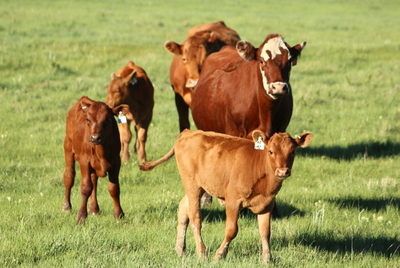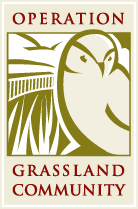News
Conservation Caravan Open Houses (II)
PART II: What’s next?
Multiple land uses within the grassland region provide us with many positives; clearly, in order to sustain human populations, we require that some land is converted to crops to grow food, or used to build homes and roadways.
OGC’s emphasis is on our remaining native prairie. If we want to protect/enhance, (or even increase) prairie habitats, we have to explore what tips the balance between maintaining vs. converting these remaining areas to other forms.

As alluded to above, one main catalyst to prairie conversion lies in the marketplace. In theory, the market-price we pay for an item reflects the cost of producing that item. In reality, it isn’t so straight forward. The market fails when the price we pay does not reflect the cost of producing that item, which often happens with environmental costs of production. Environmental costs simply aren’t taken into account. Where prairie habitats are concerned, market failure occurs when the price we pay for the steak on our plates does not include the value of wildlife habitats protected along its “journey”.
Here’s how it works: When you purchase Alberta beef, you are automatically supporting prairie stewards, and therefore contributing to the protection of remaining prairie habitats. However, if there is a sudden shift in commodity prices–for instance, if the price of canola increases while the price of beef declines—it no longer makes economic sense to continue grazing certain acres. Financially, it would be better for the producer to cultivate this land and produce canola.

But what if we (society) actually applied some form of monetary support for/valuation of wildlife habitat? Instead of comparing the price of canola with the price of beef, we would instead be comparing the price of canola with the price of beef including the value of habitat. Suddenly, a rapid shift in the price of canola will not have the same influence on the producer.
There are many approaches to addressing market failures like the one described—from incentive based approaches to regulatory ones—and OGC does not advocate one over another, nor do we claim to know which is most appropriate in this example.
Then what are we saying?
We are saying that the ranchers with whom we work are passionate about their lands and the wildlife that inhabit them. Within fiscal means, they are already doing all that they can to ranch in a profitable yet environmentally responsible manner. If we as a society ask them to do more within the context of current market failures, where “doing more costs more,” they will simply go out of business. If our ranchers go out of business, then what can we do for prairie wildlife?
You of course want to know: “What can the consumer do to help? What type of beef should I be buying and where?” These important questions were also asked of us at our open house events, and we made our very best attempts to answer (See link below)!
The short answer is that the jury is still out. However, global, national, and regional multi-stakeholder roundtables—of which OGC is a part—are working collaboratively in order to answer these very questions.
In the meantime, please participate with us in continuing this conversation and increasing awareness. Email or tweet us with your questions, ideas, or stories…whatever you feel can inform or help build upon this wave of know-how and action. When major developments or news hit our airwaves, we will similarly share these.
The fact is, without you to help spread public awareness and garner support, any answers that we uncover or can share will have no ears upon which to fall!
Click here to read PART I: Overview
Click here to read PART III: Q&A
